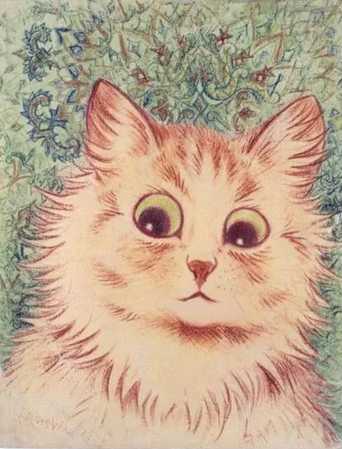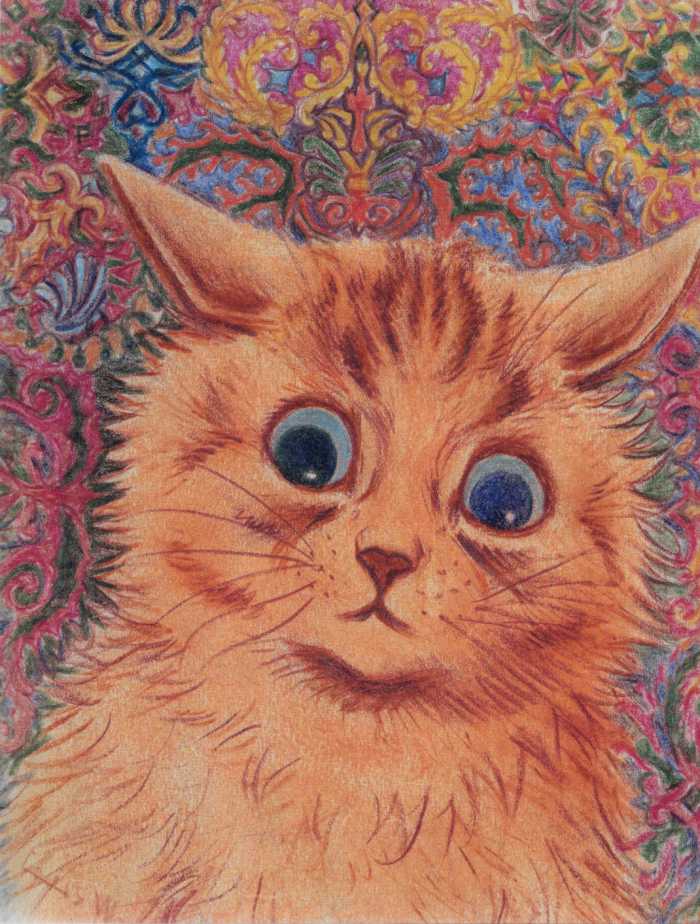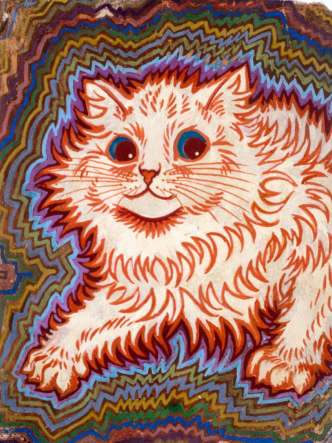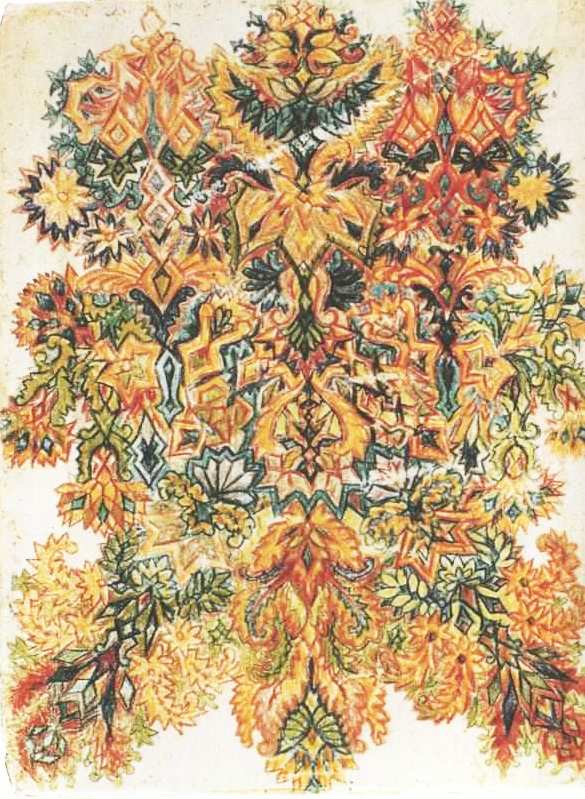Biography
LEGACY
The Victorians didn’t really even like cats. They saw cats, at best, as mouse catchers. By portraying cats as lovable, bright and human, Wain helped change the way society looked at them. [...] There’s no doubt he was successful in his bid to, as he put it, ‘wipe out the contempt in which the cat has been held.’”-David Tibet ³
During his commercial heyday, Wain’s whimsical illustrations of Catland brought delight to countless children across England, and in the years since his work has been finding a home across the world. Exhibitions of his work began circulating in the 1970s following a renewed interest in his art and continue to this day, showing in locations as distant as Korea. In 2021 his story was dramatized in the biopic The Electrical Life of Louis Wain starring Benedict Cumberbatch as the man himself, introducing Wain’s work to a whole new generation and bringing it to a popularity unseen in decades.
While the works of his final years remained obscure for some time in 1938, the psychologist Walter Maclay found prints of Wain's works and used them to support his theory of artistic deterioration. He published them in order from most normal to most abstract as a timeline, a collage that has since itself become the most widely known of Wain’s works. However, there is no indication that the paintings were actually done in that order, and by all accounts he continued drawing his signature humanized and realistic cats for as long as he drew at all. Regardless of the exact timeline, Wain’s work has achieved new life in the decades since, becoming the most widely recognized example of outsider art, influencing the psychedelia of the 1960s, and becoming almost synonymous to most people with the art of the mentally ill.
As if to make up for his thwarted musical ambitions, Wain’s art has achieved a new life in the musical world as well. Current 93’s frequent use of Wainian imagery and references to Catland have made his wild-eyed cats a familiar sight in the neofolk genre. Oingo Boingo’s 1980 self-titled release makes use of perhaps his most infamous drawing, wickedly grinning and almost radioactive with electrical lines, and Blancmange’s Happy Families secured Wain’s curious foothold in Synth Pop history. If anything, in the internet age the number of artists reinterpreting, borrowing, and drawing from his vast repertoire of art is only increasing.
Most importantly, he helped bring the cat into the modern home. By humanizing them and bringing this sympathetic portrayal to a mass audience, as well as his decades of work as leader of various animal welfare groups and anti-cruelty movements, the cat experienced a slow shift from tolerated mouse-catcher to a genuinely beloved member of the family. Every cat lover may owe him a debt of gratitude for paving the way for today’s feline-friendly world.

Guide
1: Beetles, C. (2011). Louis Wain’s Cats. WorthPress Ltd.
2: Dr David O'Flynn (February 7th, 2013), Louis Wain Exhibition, Bethlem Archive and Museum, SLaM [YouTube]
3: David Tibet & Paul Moody (October 18, 2018) - The Forgotten Artist Who Changed the Way We Look At Cats [Text]
4: A Celebrated Cat Artist. Mr. Louis Wain Chats with “Chums.” (1895, November). Chums, 204.






